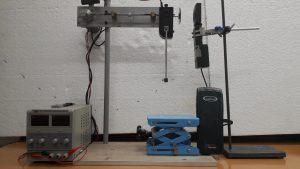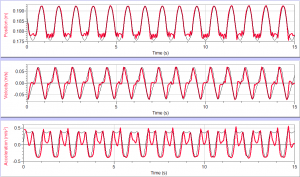| Researchers | Najeha Rashid | ||||||||
| Time Frame | Physics Project Lab 2019 | ||||||||
| Supplementary Materials | Analyzing reciprocating motion: Shaft attached to a rotating wheel | ||||||||
| Description | |||||||||
In a steam engine, the expansion of compressed gasses in a cylinder is responsible for the to and fro motion of the piston. The linear motion of the piston is converted into the rotating movement of a fly-wheel by a connecting rod or crankshaft. This mechanism, nowadays, is most commonly used in internal combustion engines, in motor vehicles running on petrol or diesel. In this report we will study the reverse mechanism: i.e. the conversion of rotary motion of a wheel into the reciprocating motion of a shaft. The dependence of the motion on the lengths of various components of the setup and angle traversed by the wheel will be investigated. Sabieh Anwar: This experiment has several interesting aspects. First, it appeals to our aesthetic sense of connecting physics with geometry. Second, a tremendously important engineering phenomenon which lies at the heart of the combustion engine is brought to the workbench of a physics student. Third, there are nuanced mathematical subtleties that are directly manifested in carefully designed experimental results. The credit for inspiring this work comes from Paul Nahin’s beautiful rendering of insightful physics phenomena in his book: “In Praise of Simple Physics”. This investigation is one of the experimental implementations of the theoretical ideas presented in this delightful read. More will follow. | |||||||||


